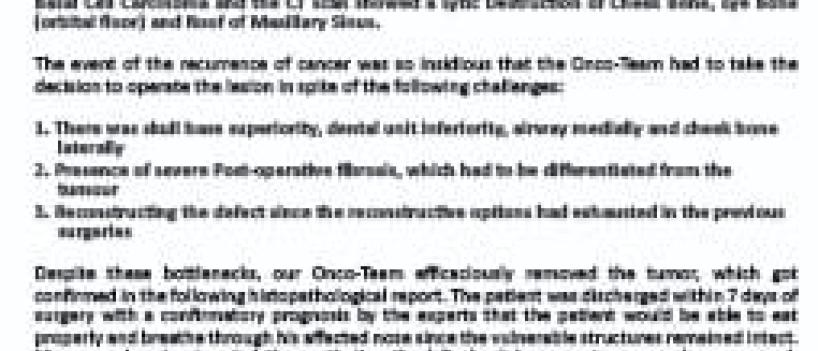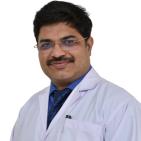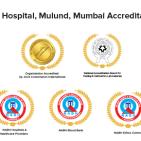
Preserving Vital Structures in Complex Basal Cell Carcinoma Surgery of maxilla without compromising oncological safety.
Mr. Desai, a 55-year-old gentleman (name changed) was suffering from a prolonged non-healing ulcerative lesion in the lower left eyelid as well as anterior cheek bone. He, also had a complain of a double vision through his left eye. The gentleman was found to have undergone a wide excision of lower cheek and reconstruction of forehead flap already without any significant avail.
After the through diagnostic examination, the team of Fortis Oncologist and Onco-Surgeon recommended for a biopsy along with CT. The biopsy confirmed a condition called recurrent Basal Cell Carcinoma and the CT scan showed a Lytic Destruction of Cheek Bone, Eye Bone (orbital floor) and Roof of Maxillary Sinus.
The event of the recurrence of cancer was so insidious that the Onco-Team had to take the decision to operate the lesion in spite of the following challenges:
1. There was skull base superiority, dental unit inferiority, airway medially and cheek bone laterally
2. Presence of severe Post-operative fibrosis, which had to be differentiated from the tumour
3. Reconstructing the defect since the reconstructive options had exhausted in the previous surgeries
Basal Cell Carcinoma is a type of skin cancer that most often develops on areas of skin exposed to the sun, such as the face. On brown and black skin, basal cell carcinoma often looks like a bump that is brown or glossy black and has a rolled border.
Despite these bottlenecks, our Onco-Team efficaciously removed the tumor, which got confirmed in the following histopathological report. The patient was discharged within 7 days of surgery with a confirmatory prognosis by the experts that the patient would be able to eat properly and breathe through his affected nose since the vulnerable structures remained intact. Moreover, keeping in mind the aesthetics, the left cheek bone contour was also preserved. Currently, the patient is undergoing radiation with an encouraging recuperation-curve.
Reconstruction - left orbital defect consisted of part orbital plate , globe and Periorbital muscles. The defect was reconstructed with scalp flap ( regional flap). Donor site was covered with split thickness skin graft.














